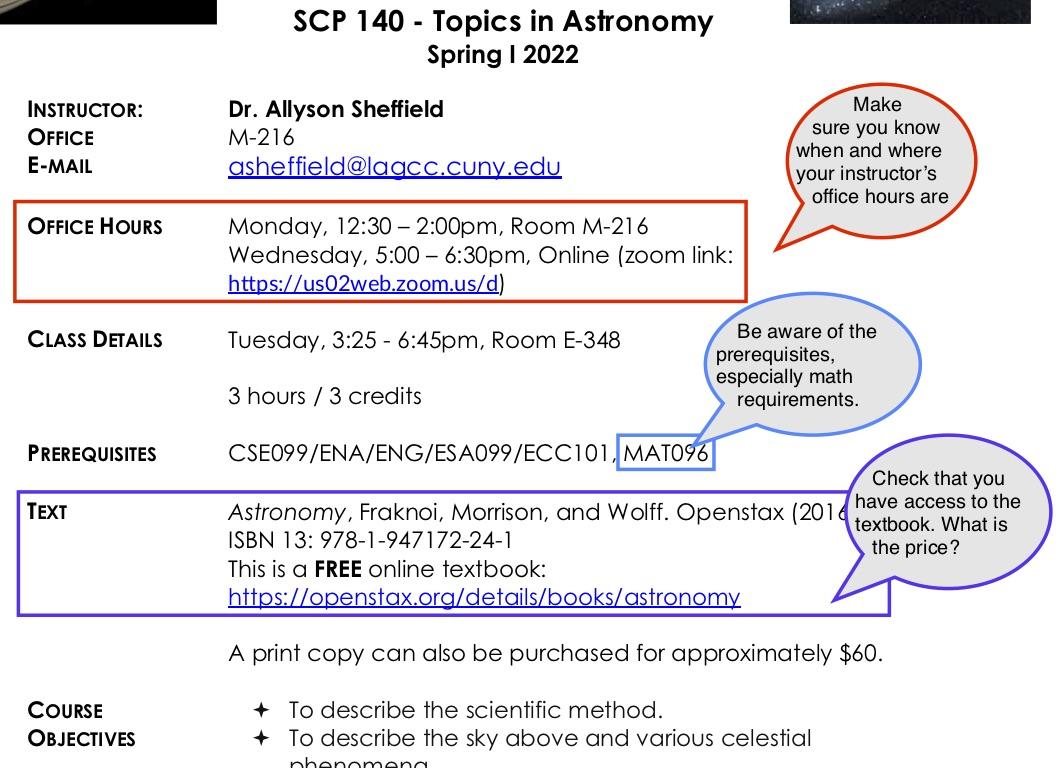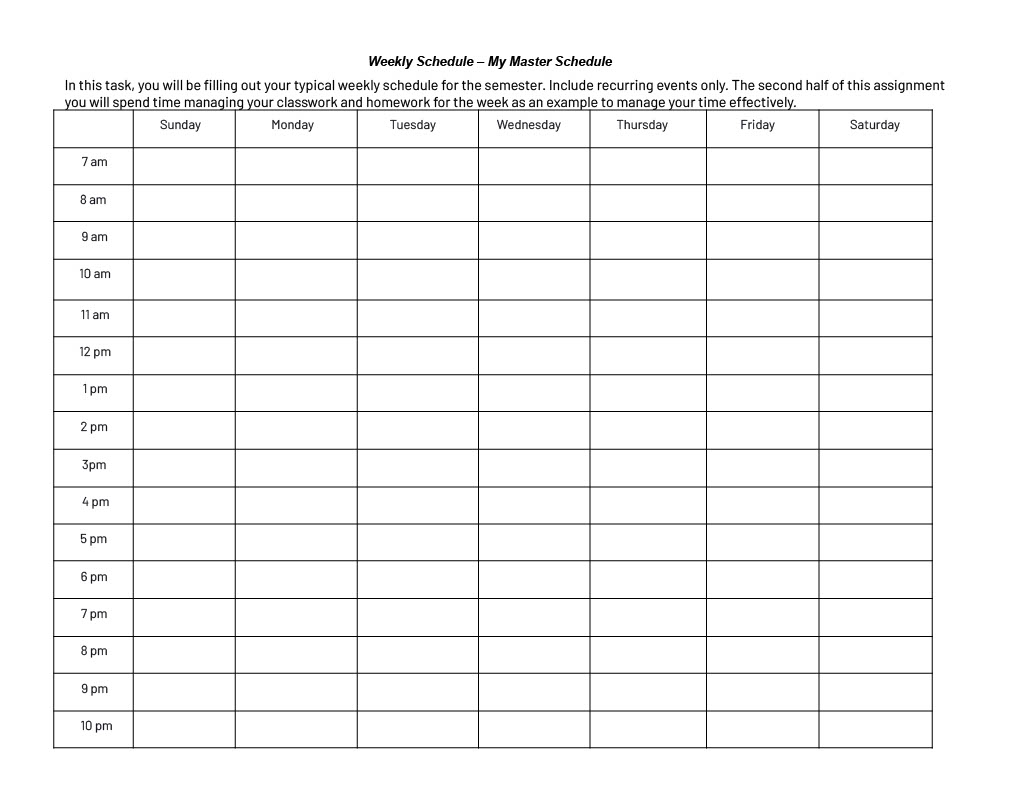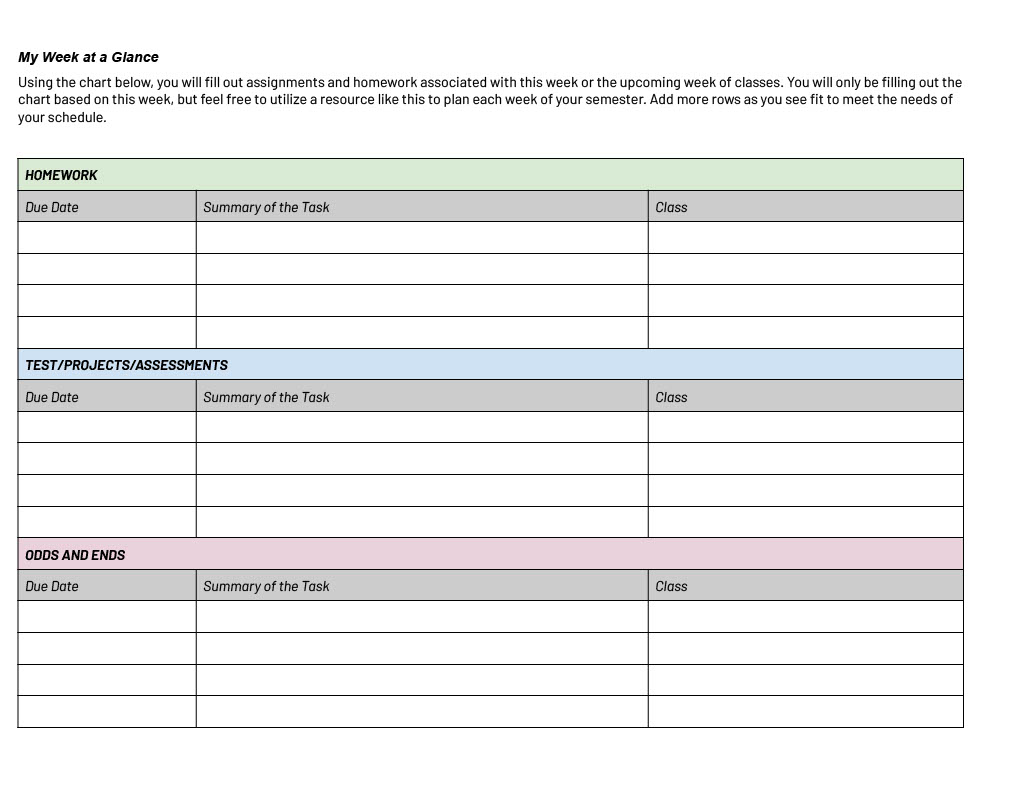Chapter 4: Time Management
Time flies when you’re having fun
The shift to college, whether you are a first time new student, a transfer student, or a non-traditional student, is about learning what works for you. That is, you need to decide how you are going to set your goals, organize your priorities, manage your time, and create strategies that assist you throughout your time at EKU. Since college often places new connections, new situations, and new ways of seeing the world in front of you, many of the skills and habits that worked for you in high school or your previous learning environments may not work for you in college. Throughout this chapter we will explore time management and goal-setting strategies to help you get and stay organized with your time.
Learning Objectives
This chapter will:
- Explain expectations of time from high school to college
- Identify reasons for why we procrastinate and strategies to work through it
- Time management techniques
Managing Time
Time is a popular philosophical concept. You may have heard some of the following sayings:
- That is a waste of time.
- Time is money.
- We have all the time in the world.
- The time is right.
- I’m having the time of my life.
- Time heals all wounds.
- We have some time to kill.
As a society, time is also how we keep track of when where we’re supposed to be (work, home, class, meeting friends and family, etc.). Think about how many measures of time you have in your home (clocks, watches, cell phones, TVs, computers, microwaves, ovens, thermostats, etc.). It is obvious that time is important to us.
However, time is a limited and precious commodity. If you used your time poorly last Wednesday, you can do nothing to get it back. Other commodities may allow for accumulating more or starting over, but time does not. We cannot “save” time nor earn more time. What we can do though, is find better ways to spend our time, allowing us to accomplish our most important tasks and spend time with the people most important to us.
You may find that time management in college is very different from anything you have experienced previously. For the last 12 years, almost all your school time was managed by educators and your parents. What you did and when you did it was controlled by others. In many cases, even after-school time was set by scheduled activities (such as athletics) and by nightly homework that was due the next day.
In the workplace, the situation is not very different, with activities and time-on-task being monitored by the company and its management. This is so much a part of the working environment that many companies research how much time each task should take, and they hold employees accountable for the time spent on these job functions. In fact, having these skills will help you stand out on the job and in job interviews.
In college, though, there is a significant difference because a great deal of time management is left up to you. While it is true that there are assignment due dates and organized classroom activities, learning at the college level requires more than just the simple completion of work. It involves decision-making and the ability to evaluate information. This is best accomplished when you are an active partner in your own learning activities.
|
K–12 |
College |
|---|---|
|
Many class activities are planned. |
Class time is given to receiving information. |
|
Homework is often similar for each student. |
You may have freedom in homework choices. |
|
Time is managed by others more often. |
Time is managed by the student. |
Why and how time can be mismanaged
Simply put, procrastination is the act of delaying some task that needs to be completed. It is something we all do to greater and lesser degrees. For most people, a little minor procrastination is not a cause for concern. But there are situations where procrastination can become a serious problem with a lot of risk. These include: when it becomes a chronic habit, when there are a number of tasks to complete and little time, or when the task being avoided is very important.
Because we all procrastinate from time to time, we usually do not give it much thought, let alone think about its causes or effects. Ironically, many of the psychological reasons for why we avoid a given task also keep us from using critical thinking to understand why procrastination can be detrimental, and in some cases difficult to overcome.
To get better at time management, you must understand some of the hurdles that may stand in your way. For college students, procrastination is often one of the biggest. What follows is an overview of procrastination with a few suggestions on how to avoid it.
Strategies to work through procrastination and manage time
Consider that there are 7 days in a week, a day has 24 hours, and each hour has 60 minutes. This means then there are 168 hours in a week. How are you spending it?
How do you spend your 168 hours in a week?
- Child Care
- Class
- Community Service / Volunteer
- Commuting / Transportation
- Eating / Food Preparation
- Exercise
- Family
- Friends
- Household / Child Care Duties
- Internet / Social Media / Phone / Texting
- Party
- Recreation / Leisure
- Relationship
- Sleeping
- Spirituality / Prayer / Meditation
- Study
- Video Games
- Watching TV or Movies, Netflix, Youtube
- Work / Career
Now that you have mapped out how you spend your time, take a look at some ways that you can strategize:
Avoid Procrastination
Manage Distractions
Distractions are a significant cause of procrastination. It is so easy to play a video game a little while longer, scroll social media, or finish watching a movie when we are avoiding a task. Putting aside distractions is one of the primary functions of setting priorities so that important tasks get completed.
Some distractions are obvious: your friend sends you a text, your family needs your attention, or there is loud construction outside the window. However, other distractions are less obvious. Sometimes we can be distracted by our thoughts and feelings. When we are feeling stressed or overwhelmed, these internal causes can be just as distracting. One way to deal with internal distractions is to keep a study journal. At least once a day write an entry about how you have used your time and whether you succeeded with your schedule for the day. If you struggled to keep your daily schedule, identify what factors kept you from doing your work. This journal will help you see your own habits and distractions so that you can avoid things that lead to procrastination.
Pomodoro Technique
A key aspect of overcoming procrastination is developing strategies to get started. Often, committing to complete one small task can be enough to begin moving ahead. For example, just taking out your laptop, opening a new document, and typing a title can create some forward momentum. A well-known technique for managing time that can help with procrastination is called the Pomodoro Technique. The Pomodoro Technique was developed by Francesco Cirillo. The basic concept is to use a timer to set work intervals that are followed by a short break. The intervals are usually about 25 minutes long and are called pomodoros, which comes from the Italian word for tomato because Cirillo used a tomato-shaped kitchen timer to keep track of the intervals. Setting a timer is a small task that will provide you with the momentum to overcome procrastination.
Organize
Use the Syllabus to your advantage
Perhaps the most important document to read in any course is the syllabus. The syllabus contains crucial information, such as the schedule of topics, major assignments and due dates, and how to get in touch with the instructor and when and where their office hours are.

Figure 4.1 shows you an example of a sample syllabus for a course, with some of the key pieces of information to immediately note.
Is there anything in the syllabus that is unclear? If so, note this and plan to ask your instructor. BUT before doing this, make sure the question is not answered someplace else in the syllabus!
Create a Semester Schedule
One important aspect of organization is knowing the important dates for your classes and the college in general. Academic deadlines matter and deadlines in college may not be flexible. A student needs to be aware of key dates throughout the term. The responsibility for knowing important dates lies with the student. A course syllabus is prepared by your instructor and is like a roadmap for your learning journey ahead. The course syllabus that you get for each class you take will have important dates for that specific class. The college will also put important dates on an academic calendar for the school.
A semester schedule gives you a visual picture of the tasks and events that will happen during the semester. If you are taking a number of classes, this is a tool that will help you see what is coming up next. You may wish to use different colors to distinguish between different classes, or between your academic events and personal events.
Below is an example of GSD 101’s “Creating Your Master Course Schedule” assignment where students are asked to practice making a semester schedule.

Figure 4.2: Page 1 of Creating Your Master Course Schedule

Figure 4.3: Page 2 of Creating Your Master Course Schedule
Break Down Large Tasks
One of the biggest challenges college students may have is accurately estimating how much time it will take to complete a task. We might think we’re going to be able to read an assigned chapter in an hour, but what if it takes three hours to read and understand the chapter? Having the skill to know how long a homework assignment will take is something that can be developed. However, until we can anticipate work and study time accurately, it is best to leave some time in our schedule in case it takes longer than we had anticipated
How you divide the time is up to you. If it is going to take you five hours to study for a final exam, you can plan to spread it over five days, with an hour each night, or you can plan on two hours one night and three hours the next. What you do not want to do is plan on studying only a few hours the night before the exam only to find out that you greatly underestimated the time that you would need. If that happened, you would run out of time before finishing, with no way to go back and get more time to study. In this kind of situation, you might even be tempted to “cram” or “pull an all-nighter,” which means going without sleep for the entire night and using that time to study. While this method of trying to make up for poor planning is common enough to have a name, rarely does it produce the best work.
Develop a plan for your project by working backward and estimating how much time each step will take. One tool that can help you do this is the online Assignment Calculator from the University of Minnesota. It helps you put your assignments and research projects into a timeline.
Use Small Blocks of Time
By using smaller blocks of time, you can cover material in chunks and not have to worry about the larger whole. A mistake that many people make is that they try to cram information into their minds in one large session. This isn’t a successful nor long term strategy for most students.
Look for smaller blocks of time to study. For example:
- Consider creating flash cards for material that you need to learn. You can take a set of flashcards with you and work whenever a few minutes become available. If you use one of the many flashcards or self-testing apps available on your phone, you’ll be able to easily pull out your phone and make use of those small blocks of time.
- Self-testing is one of the most effective ways to learn. Create a list of study questions for your course. Pull out the list when you have time available, and review a few questions. Keep track of those you answer correctly, and those you need to study more.
- Does your course include access to online videos that explain and review key concepts? Watch a video or two to review, or to improve your understanding of a key course idea.
- Some courses also include access to online self-study questions. Try answering a few review questions in your spare moments. These online quizzes usually provide immediate feedback on what you understand, and what you should study further.
- Do you like to learn by listening? Make an audio recording of the important points you want to remember, and listen while you commute or exercise. Maybe audio books are for you – are any of your course materials available in this format?
Prioritize
Time Management Matrix
To better see how things may need to be prioritized, you can make a list of the tasks you need to complete and then arrange them based on importance and urgency in a quadrant map often called a Time Management Matrix.
To create a matrix, you begin by making a list of things you need or want to do in a day and then draw your own version of the grid below. Write each item in one of the four squares; choose the square that best describes the item based on its urgency and its importance. When you have completed writing each of the tasks in its appropriate square, you will see a prioritization order of your tasks.
| Examples can be found in each box! |
Time Management Matrix | |
|---|---|---|
| Important | Not Important | |
| Urgent |
|
|
| Not Urgent |
|
|
Daily Top Three
The idea behind the daily top three approach is that you determine which three things are the most important to finish that day and these become the tasks that you complete. It is a very simple technique that is effective because each day you are finishing tasks and removing them from your list. Even if you took one day off a week and completed no tasks on that particular day, a daily top three strategy would have you finishing 18 tasks in the course of a single week. That is a significant number of things crossed off your list.
 RSO Spotlight: The ASLA Club
RSO Spotlight: The ASLA Club
The ASLA Club is a place where students can learn and practice American Sign Language (ASL) while making friends and learning about Deaf culture. We make sure our events are accessible by providing interpreters and using ASL, so even if you do not know much ASL, you are welcome to come and learn with us.
In ASLA, we…
- Practice ASL with New Friends
- “Voice-Off” ASL Experience
- ASL Geared Games
- Connect with Deaf and Hard of Hearing People
- Earn Accomplishments for Graduation
Requirements: $10 Fee and Volunteer Hours
ASLA Club: a welcoming space for both Deaf and hearing people to communicate and connect.
EKU Student Support Resources
Now that you’re a college student, there are many opportunities that are going to be new, exciting, scary, frustrating, complicated, and thrilling. The unfortunate thing is that you won’t be able to do everything. However, with the right perspective and practice you’ll figure out what works for you and what doesn’t. The important thing to recognize is that managing your time in ways that work for you will help you succeed, but that automatically means you’re going to have to get through the times that you fail at it. Failing at time management-like missing classes, being behind on homework, not keeping up with your digital calendar, choosing to hang out with friends instead of going to your advising meeting, or forgetting to submit an assignment-doesn’t mean that you need to continue to miss classes or not keep up with your calendar. You just need to reflect, adjust, and move on.
Many college students imagine that their time at EKU will be linear. That is, they believe that it happens in a straightforward way like the image below:

Figure 4.4: Graphics courtesy of Greg Stoup, Rob Johnstone, and Priyadarshini Chaplot of The RP Group
In reality, the student journey looks more like this:

Figure 4.5: Graphics courtesy of Greg Stoup, Rob Johnstone, and Priyadarshini Chaplot of The RP Group
And so, remember that there are these resources to help you learn how to and practice time management, talk to someone if you’re feeling overwhelmed, and get your body moving to keep your mind sharp:
There are personal wellness and sense of belonging resources like the:
- Counseling Center (Whitlock 5th floor) and Zone of Wellness (Whitlock 5th Floor)
- Campus Rec Center
- Colonel’s Cupboard (Powell 215) where you can get (or donate) different foods and clothes
- Student Life and First Year Experience (Powell Middle Floor)
- Center for Inclusive Excellence and Global Engagement (Powell Ground Floor)
- Bobby Verdugo & Yoli Ríos Bilingual Peer Mentor and Tutoring Center aka “El Centro” (Library 106)
- Office of Military and Veterans Affairs (Powell Middle Floor)
- Corq app / Engage website to check out Registered Student Organization and campus events
- Student Health Services (Rowlett Building)
There are academic wellness resources like:
- The Student Success Center (Ground Floor of Library Room 106D)
- Center for STEM Excellence (New Science Building – Lobby)
- The Noel Studio for Academic Creativity (Library)
- Bobby Verdugo & Yoli Ríos Bilingual Peer Mentor and Tutoring Center aka “El Centro” (Library 106)
- EKU Libraries
There are university support resources like:
- Big E Central (Whitlock 2nd Floor or bigecentral@eku.edu)
- Center for Student Accessibility (Whitlock 3rd Floor)
- Center for Student Parents (Turley House)
- Office of Advising and Career Services [OACS] (Whitlock 4th Floor)
- Card Services and Meal Plans (Powell Ground Floor)
Summary
- Managing your time will look different than in high school.
- Mismanagement of time can be easily done while attending college.
- Procrastination is a common issue students face during their first semester, and there are ways to avoid it.
- Prioritizing your time through a Time Management Matrix can be a useful strategy to organizing your time at college.
- EKU has various support service on campus to help you succeed while you are here.
References
Attributions and Licenses
Parts of this chapter are adapted from the following sources:
College Success for Newcomers © 2023 by Rebecca Hiebert and Emilie Jackson, licensed under a Creative Commons Attribution-NonCommercial-ShareAlike 4.0 International License.
First Year Seminar © 2022 by Kristina Graham, Rena Grossman, Emma Handte, Christine Marks, Ian McDermott, Ellen Quish, Preethi Radhakrishnan, and Allyson Sheffield; licensed under a Creative Commons Attribution-ShareAlike 4.0 International License.
How to Learn Like a Pro! © 2016 by Phyllis Nissila, licensed under a Creative Commons Attribution 4.0 International License.
Liberated Learners © 2022 by Terry Greene et al., licensed under a Creative Commons Attribution-NonCommercial 4.0 International License.
Strategies for First Year College Success © by OpenStax is licensed under a Creative Commons Attribution-NonCommercial 4.0 International License.
Time Management Theory © by Dave Dillon, licensed under a Creative Commons Attribution 4.0 International License.
University Success © 2016 by University of Saskatchewan, licensed under a Creative Commons Attribution-NonCommercial-ShareAlike 4.0 International License.
